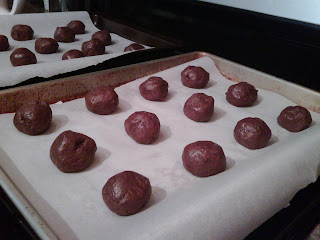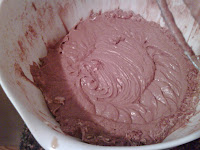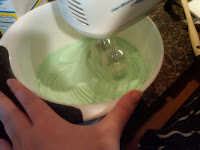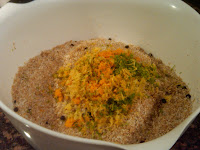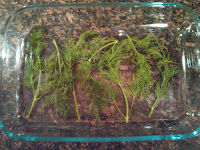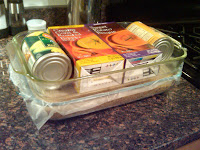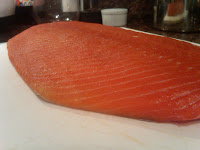This is a pretty easy way to take a simple pasta dish and make it complex and deeply layered. The acid of the tomato paste, brightness of the lemon, salt of the anchovy paste (or olive paste if preparing as vegetarian/no anchovy version), and fresh herb of the basil create flavors all around. It's a warm, flavorful meal that isn't half bad for lunch the next day, either.
To make the recipe vegetarian, just substitute kalamata olive paste for the anchovies/anchovy paste. You can also do this if you are simply scared of the anchovy, as many people are. I encourage you, however, not to fear these salty, oily fish, but embrace it. The easiest way to think of anchovy is as the X factor in a lot of things, such as this dish, or Ceasar salad. You can't fully taste it, but it adds a brine-y note that is distinct and often what people love about these dishes. Admittedly, it can be a mess to work with straight from the jar (always get the white filets). It's oily. That's why we often substitute in a little bit of anchovy paste in place of the filets to save time and clean-up. The filets are better, but so is not cleaning an extra knife and cutting board and figuring out what to do with the rest of the jar of anchovies. Like with tomato paste, we buy the tubes of anchovy paste, and keep the leftovers in the fridge for later. This way we don't feel wasteful buying a whole can of tomato paste and then only using a tablespoon. How many recipes really call for a whole can of tomato paste, anyway?
If you find the salt of kalamata olives is too strong, you can use Manzilla olives in their place. The original recipe for this had bread crumbs to thicken, but we've never really had a problem with the sauce being runny, so we've removed them, though we have continued to use the full amount of garlic. Basil can be expensive, and you can reduce it as low as half a cup if necessary.
Cooking Time: 40 minutes, Serves 4
Ingredients
1/4 cup extra-virgin olive oil
6 medium garlic cloves, minced or pressed through garlic press (about 2 tablespoons)
1 tablespoon minced white anchovy fillets (4 to 6 fillets)
OR 1 teaspoon of anchovy paste
OR 1 teaspoon kalamata olive paste (if vegetarian)
1 tablespoon tomato paste
1/4-1/2 teaspoon hot red pepper flakes
1/4 cup oil-packed sun-dried tomatoes , drained, rinsed, patted dry, and cut into thin strips
1 cup pitted kalmata olives , well rinsed and coarsely chopped (1 8 oz bottle)
1 3/4 teaspoons table salt
1 pound rigatoni (mezze) or farfalle (any short pasta will work)
2 ounces finely grated Parmesan cheese (about 1 cup)
3 tablespoons chopped fresh parsley leaves
1 1/2 cups lightly packed fresh basil leaves , roughly torn
Ground black pepper
1 lemon , cut into wedges
Instructions
- Combine 2 tablespoons quality olive oil, garlic, anchovies (or paste of choice if substituting), tomato paste, red pepper flakes, sun-dried tomatoes, and olives in medium bowl. Make sure olives are well-rinsed of brine prior to chopping and adding. Set aside.
- Meanwhile, bring 4 quarts water to boil in Dutch oven over high heat. Add rigatoni and salt.
- While pasta is cooking, heat 12" nonstick skillet to medium heat and add olive mixture and remaining olive oil. Cook until olive mixture is aromatic and oil has turned rusty red, 4 to 6 minutes.
- Remove 1 cup pasta cooking water from pot and add to skillet. Bring to simmer and cook for 2 minutes. Remove pan from heat while pasta finishes cooking.
- When pasta is just shy of al dente, drain pasta, reserving 1/2 cup of pasta cooking water, and transfer back to Dutch oven.
- Add olive mixture to pasta and toss over medium heat until pasta absorbs most of liquid, about 2 minutes. Stir in 1/2 cup Parmesan. Adjust consistency of sauce with reserved pasta water. (Sauce should cling to pasta but not be too loose or runny.)
- Remove pot from heat and stir in parsley and basil; adjust seasoning with pepper.
- Sprinkle with parmesan and serve with lemon wedges to be added prior to eating.









